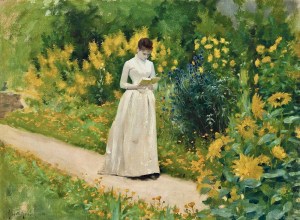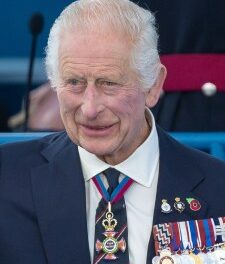We support our Publishers and Content Creators. You can view this story on their website by CLICKING HERE.
Several trends have alienated ordinary laypeople from the worlds of both art and intellect, contributing to anti-intellectualism and hostility to the arts, as well as simple indifference to the finer things of culture. This is deplorable because the arts and the life of the mind are both important.
When I was about five years old, I loved nothing more than to draw pictures of hot-air balloons. I had seen these multicolored beauties floating in the air in rural New Jersey where my extended family lived, and they captured my imagination. Before entering kindergarten, I had a “get to know you” session with the teacher one afternoon and showed her my drawings. (To this day I love all things aerial and things that move in the breeze—wind chimes, pinwheels, etc.) In time drawing led to painting, and eventually to music. Suffice it to say I had an “artistic temperament” from early on.
But side by side with this “artistic temperament” I also developed what I think of as an “intellectual temperament.” From an early age I loved poring over books, of which there was a healthy supply in our house. Many were books for adults, and whether I understood them or not didn’t matter to me; I loved simply looking at them and imagining a time when I could understand them. Their seriousness, their designs, the vintage smell of the pages and the bindings, all of this intrigued me and made me want to know more.
As I progressed through school, I became interested in history and in ideas, always wondering about the meaning of things. By high school I was reading a good deal of G. K. Chesterton, whose delightfully inverted insights made me see life in a fresh way. I credit Chesterton as one of the forces that drew me out of doldrums and depression and made me see that life might have something to offer. Earlier, when the time for my Confirmation rolled around, I chose as my patron saint St. Philip Neri. I knew nothing about this joyful Renaissance reformer at first, but his profile in my illustrated Book of Saints told me everything I needed to know. This choice led me to read a lot about medieval and Renaissance culture, humanism, and the like. Visits to the art museums of Washington, DC fueled these interests. College brought studies in philosophy and theology alongside music.
The culture at large seems to associate being artistic and being intellectual. Think of the stereotypical brainy child at school; he often plays an instrument in addition to being scholastically gifted. But is being artistically inclined the same as being intellectually inclined? I believe the two temperaments are distinct, though related and sometimes occurring in the same person. But as often as not they exist in separate souls. Think of those two immortal pop culture characters, Schroeder (the moody artist) and Linus (the anxiety-prone theologian/philosopher) in Peanuts.
I suppose the two temperaments find common ground under the umbrella of culture. We commonly think of “culture” as including both the arts and intellectual studies—philosophy, the great books, etc. Yet in my experience the people who go in for the arts professionally have not always been the same people who go for the world of ideas. Over 65 years ago the great cultural historian Jacques Barzun wrote The House of Intellect, a book full of sharp and caustic observations about American society. Many of his observations have not dated at all. Barzun remarked that the modern, avant-garde artistic world often presents itself as distinctly anti-intellect, and that plenty of artistic people are innocent of intellectual ideas, while wanting to give the opposite impression. This, for Barzun, was symptomatic of a disrespect for intellect in society at large.
Speaking of my own experience, the artistic persons I have known have not on the whole been of the most intellectual, and practicing an art and engaging with ideas for their own sake often seem to be very separate activities. I think this is because art, although it includes conceptual or intellectual aspects, is first and foremost a practice, an activity. The artist is a doer or maker, not primarily a thinker. You can excel at an art—say, painting, or playing an instrument—without having a strong inclination to theorize about it. Art does not appeal merely on an intellectual level—this is particularly true of nonverbal art forms like music—but also, maybe even primarily, to feeling and sentiment (“fused spirit and sensation” is how Barzun puts it).
Many great artists throughout history have not been great intellects, and their art has not suffered for this. Artists often undergo a narrowly specialized education rather than a broadly humanistic one. One can argue whether or not this narrows their minds and perspectives as well, and whether their art would be deeper as a result of an acquaintance with literature, philosophy, and arts other than their chosen one. While there are undoubtedly exceptions, it does seem to me that many artists do not read widely or engage with intellectual ideas, nor are they able to relate their art to a wider understanding of Western culture.
But on the other hand, how many “intellectuals” (read academics) must there be who, while immersed in the world of ideas, are insensitive to the arts and the beauty-filled side of life? That too is a shame. Man cannot live on abstractions alone.
I try to combine artistic and intellectual passions, but my retiring nature means that I tend to privilege the intellectual—always with the assumption, though, that a well-turned essay can be a work of art. Over time I have come to realize how thoroughly intellectual my temperament is, and this in spite of the fact that I am innocent of any advanced academic degree.
Perhaps at this point I should try to define or characterize this phenomenon, the intellectual temperament. I tend to relate to things on a critical, analytical, philosophical level. The world of books, of commentary, of serious journals (like this one) is the world in which I thrive and feel at home. I need consistent—in fact constant—intellectual stimulation, or I feel out of sorts. This intellectual approach to life feeds into art as well. I can’t simply enjoy a work of art and then go to lunch. Art for me is not simply entertainment, but a stimulus to further thought and reflection. As soon as I become acquainted with a new work, I must learn about the history behind it and the critical body of opinion around it.
I tend to see all things—works of art, books, events, people—in a historical dimension, as related to their place in time. A life without intellectual passion and interest, a life lived on a flat, material, present-minded, matter-of-fact level, is to me unthinkable.
Not to put too fine a point on it, mundane and practical things bore me (the exceptions to this are cooking and cleaning, which I quite enjoy). I am increasingly impatient with waiting in line at the bank, driving in heavy traffic, and other things that steal time away from reading, thinking about Western civilization, and the like. If I don’t have a good book, or preferably half a dozen, at my disposal I soon get antsy. Clear-mindedness is what I constantly seek, and I have come to resent situations—social or otherwise—which intrude upon my tranquility of mind or manipulate my thinking.
Here is one of the main differences, as I see it, between the intellectual and the artistic temperament. While the intellectually inclined person may produce fruits of labor from his intellect, intellectuality as such is not tied strictly to production. The intellectual person (note that I refrain from using “intellectual” as a noun, for reasons I’ll explain) delights in pure understanding without necessarily giving birth to something in creation or art. He or she is a contemplative, enjoying knowledge and truth for their own sake. Understanding, for the intellectual person, it its own reward.
Why do I choose not to use “intellectual” as a noun (“an intellectual”)? Because of its connotations. Barzun informs us that this particular use of “intellectual” dates back no further than the late 19th century, a time when people who engaged in mental labor sought to distinguish themselves as a class from mass society. For me “an intellectual” or “intellectuals” has a tone of self-regarding superiority when used by intellectual people themselves, or a tone of contemptuous derision if used by those who consider themselves as nonintellectual. Such loaded rhetoric obscures the authentic use of the intellect, which is a noble and serious thing. And it contributes to the trend of categorizing human beings in terms of mass types instead of as individual persons. Intellectual the noun, it seems to me, comes with too much political baggage.
One must always be on one’s guard about false intellectualism, inflated language and inflated ideas. This kind of intellectual pretention comes in for quite a drubbing from Barzun, whose own authentic intellect (and deep and broad culture) always shines through. Such higher dimensions of life as the spiritual, the philosophic, and the aesthetic are routinely sidelined in favor of the ideological and the political, which are inherently narrower and more temporal concerns.
This is true in the art world itself, which as Barzun noted has in many instances become deeply anti-intellectual. Politicized art, art of the absurd, narcissistic or nihilistic gestures posing as art: all manifest a departure of genuine intellect from the art world.
The purely intellectual world, meanwhile—and that means mostly the academic world—has long ago been spoiled by excessive specialization, a trend which cuts scholars in various fields off from one another and from the general public.
About the modern cult of the “artiste” Barzun also had much to say. There is a modern idea of the artist as some sort of mystic guru or professional crazy person; I favor a more classical, craftsman-like view of the artist’s role, one that leans less on self-expression and more on learning and discipline.
Similarly, being intellectual should be based on a sharing in a common civilizational and cultural inheritance. The worlds of both art and intellect have suffered from too much obscurantism and fragmentation, too much of an insiderish professionalism.
All these trends have alienated ordinary laypeople from the worlds of both art and intellect, contributing to anti-intellectualism and hostility to the arts, as well as simple indifference to the finer things of culture. This is deplorable because the arts and the life of the mind are both important. If we believe that the cosmos bears the imprint of the Logos, the divine Reason, then we are obliged to cultivate our minds. If the universe is a work of Creation (and not a random and meaningless happening), then human art and creativity are very important indeed.
Art or intellect? I am equally committed to both. I can hardly choose between the two. Long live the arts, long live the life of the mind. I am still, blissfully, my five-year-old self, drawing hot-air balloons and sitting in awe before the vast storehouse of books and knowledge.
The Imaginative Conservative applies the principle of appreciation to the discussion of culture and politics—we approach dialogue with magnanimity rather than with mere civility. Will you help us remain a refreshing oasis in the increasingly contentious arena of modern discourse? Please consider donating now.
The featured image is “Portrait of poet and slavophile Ivan Sergeyevich Aksakov” (1878) by Ilya Repin, and is in the public domain, courtesy of Wikimedia Commons.

 Conservative
Conservative  Search
Search Trending
Trending Current News
Current News 






